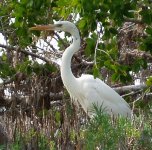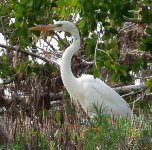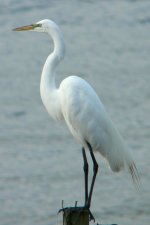Gary Clark
Registered User
I observed this bird (and took some poor photos with a pocket camera) for hours as he hunted around our tent camp in the Everglades. I was thinking "Great Egret" the whole time. But something didn't seem right, and I eventually concluded it was the white morph of the Great Blue. Now, reviewing the photo, I can't be sure. Unfortunately, the legs don't show, or it would be easy, and there is no way to judge size from the photo. Help from Aredeidae experts would be welcome.








